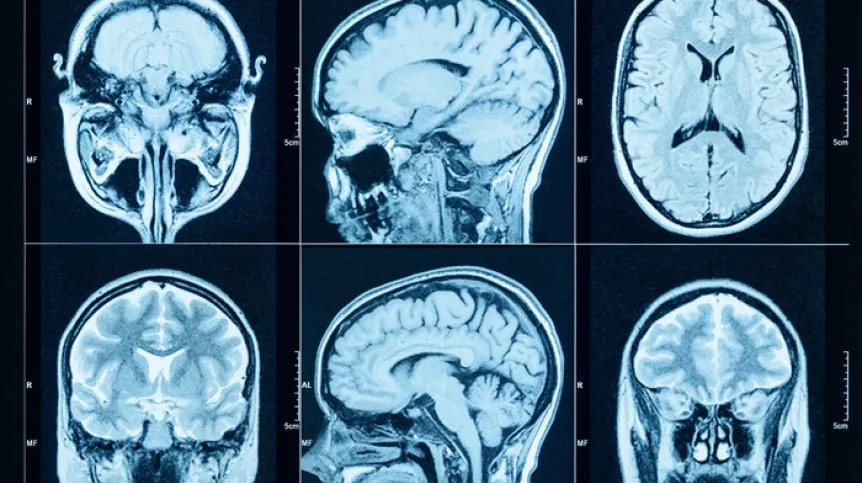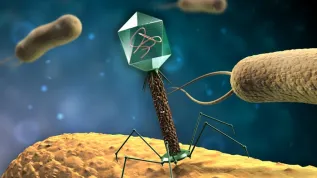
A traumatic event can alter the molecular “switches” placed on the DNA of brain cells. What changes post-traumatic stress disorder (PTSD) causes in individual cells — and whether they can be reversed — is the focus of research led by Mykhailo Batiuk, PhD, a European Research Council (ERC) grant recipient based at Łukasiewicz–PORT in Wrocław.
A mortal threat, an accident, or witnessing a tragic event can exceed the brain’s coping capabilities and permanently reprogram it, triggering PTSD.
“Currently, the most effective form of therapy is psychotherapy combined with antidepressants, but the effectiveness is still low. The problem results from the fact that we do not fully understand what exactly changes in the brains of PTSD patients. This is why we do not have a fully effective treatment,” Batiuk said.
Stress activates the hypothalamic–pituitary–adrenal axis, releasing large amounts of hormones such as corticosteroids, which affect the brain. PTSD has been linked to inflammation involving glial cells — astrocytes and microglia — that play a key role in brain immune responses.
“Previous research, including functional magnetic resonance imaging (fMRI) studies, has revealed which parts of the brain are affected,” Batiuk explained. “The problem primarily affects the prefrontal cortex. This part of the brain is responsible for cognitive functions and memory, crucial for our normal functioning.”
While earlier work has shown which brain regions are disrupted, little is known about how these changes occur at the level of individual neurons. Batiuk’s ERC-funded project aims to close that gap by studying epigenetic mechanisms associated with PTSD.
“You can think of it as a layer of molecular ‘switches’ superimposed on our DNA,” he said. “Trauma does not change the genetic code itself, but turns these switches on and off. This, in turn, alters the functioning of brain cells and leads to PTSD symptoms.”
Using advanced single-cell genomics, Batiuk plans to identify which brain cell types are most affected and which specific epigenetic “switches” are altered. “Identifying them could pave the way to designing new, targeted drugs that will ‘reset’ these switches,” he said.
Earlier studies have analyzed brain tissue “in bulk,” averaging data from millions of cells and obscuring cellular-level detail. “The techniques we use allow us to unravel these changes at the individual cell level,” Batiuk said. “One of these methods is snm3C-seq, or multi-omic sequencing, which allows us to simultaneously examine DNA methylation and the spatial organization of chromosomes in a single cell nucleus. When I sequence a single cell, I will see where methylation occurs and which chromosome fragments interact.”
Batiuk has previously used similar methods to study schizophrenia and fear memory. Now, he plans to combine that knowledge to investigate the cellular causes of PTSD.
The project uses brain tissue samples obtained mainly from U.S. tissue banks. “The brain cannot be used for transplantation, making it a valuable research material,” Batiuk said, adding that the team expects to analyze about 100 samples. “We will start with small fragments of the prefrontal cortex, from which we can obtain up to 50,000–100,000 cells. This is sufficient for advanced analyses.”
“We know that DNA methylation is involved in gene silencing, among other things. By comparing a given cell type in PTSD patients with cells from healthy individuals, I will be able to see if and where changes have occurred in the genome. This will allow me to estimate which genes are involved in the development of PTSD. We can then target these genes or genome regions using epigenome-modifying tools,” he explained.
The research will also include experiments on an animal model.
When asked why he chose Łukasiewicz–PORT to carry out his ERC grant, Batiuk highlighted the institute’s translational focus. “PORT not only conducts basic research but also focuses on translating its results into clinical practice,” he said. “I was attracted by the prospect of being able to try to implement the results in collaboration with industry, found a startup, or introduce them into a clinic. Of course, it is too early to talk about that yet. First, we need to find solid therapeutic targets, but in the future, in collaboration with the institute, we will strive to implement the results.”
The latest ERC competition, concluded on September 4, awarded a total of €761 million to 478 young researchers. Six projects will be carried out in Poland, while the largest numbers of grants went to Germany (99), the United Kingdom (60), the Netherlands (44), and France (41).
PAP - Science in Poland, Ludwika Tomala (PAP)
lt/ bar/ mhr/
tr. RL













